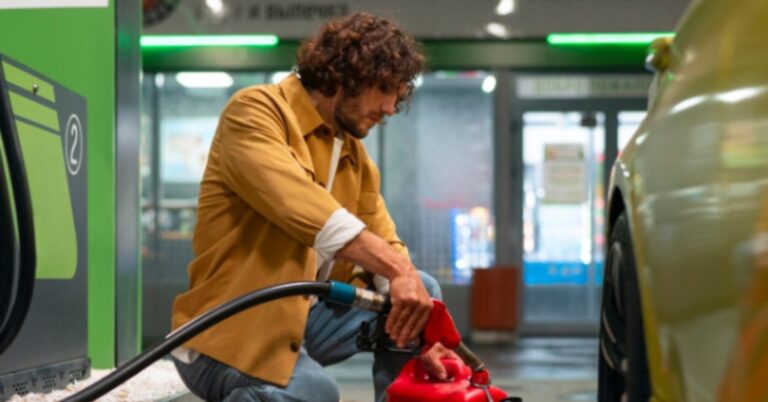Key Takeaways:
Emergency fuel delivery services provide crucial support in unexpected situations. They ensure that you can continue your journey without delays, enhance safety on the road, and save time and stress associated with running out of fuel.
Table of Contents:
- Introduction
- What is Emergency Fuel Delivery?
- Situations Requiring Emergency Fuel Delivery
- Advantages of Emergency Fuel Delivery
- How Emergency Fuel Delivery Works
- Choosing the Right Service
- Prevention is Better Than Cure
- Conclusion
Introduction
Running out of fuel on the road can be a fraught experience, leaving drivers stranded and stressed about reaching their destinations or disrupting their daily routines. This is where emergency fuel delivery services step in, providing timely assistance to ensure you’re back on track. In this article, we delve into the intricacies of emergency fuel delivery, exploring what it entails, why it might be necessary, and the benefits it offers drivers.
What is Emergency Fuel Delivery?
Emergency fuel delivery is a specialized service to rescue drivers stranded due to an empty fuel tank. It involves dispatching a technician or delivery personnel to your location, often equipped with a mobile fuel supply or cod fuel, to refill your tank quickly. This service is invaluable for those unexpected moments when you overlook the fuel gauge or find yourself far from the nearest gas station.
Situations Requiring Emergency Fuel Delivery
Several scenarios may necessitate the use of emergency fuel delivery services. One common situation is underestimating the distance you can travel on your remaining fuel, only to find the gauge nearing empty in a remote area. Similarly, adverse weather conditions or heavy traffic can impede access to fueling stations, catching drivers off guard. Technical issues with the vehicle’s fuel gauge, leading to inaccurate readings, can also contribute to running out of fuel without prior warning. Moreover, leisure travelers exploring off-the-beaten-path routes with sparse fuel stations may need this service more frequently.
Advantages of Emergency Fuel Delivery
The primary advantage of emergency fuel delivery is peace of mind. Knowing you have a reliable solution in the event of an empty tank reduces the anxiety associated with unexpected halts. Additionally, it enhances personal safety by ensuring drivers are not stranded on potentially dangerous roads, especially during late hours or in unfavorable weather conditions. The convenience factor is significant, as it saves drivers the hassle of locating a gas station and arranging alternative transportation. Speed and efficiency are inherent benefits, facilitating a swift return to the road with minimal disruptions to your schedule.
How Emergency Fuel Delivery Works
The process for emergency fuel delivery begins with a call to a delivery service provider detailing your current location and fuel requirement. The provider dispatches a trained professional with the necessary equipment and fuel supply for your vehicle. On arrival, the fuel is transferred to your tank, often allowing you to reach the nearest station where a full refuel can be conducted if needed. The promptness of service varies based on location and provider, but many prioritize rapid response times to assist stranded drivers swiftly. Advancements in technology enable tracking for accurate ETA estimates, adding an extra layer of reliability and reassurance for users.
Choosing the Right Service
When selecting an emergency fuel delivery service, several factors should be considered. Reliability and speed of response are critical, as these determine how quickly you can receive assistance. Checking reviews and customer feedback can provide insights into service quality and customer satisfaction. Costs associated with delivery should be transparent, with no hidden fees or charges; clarity on these aspects helps manage expectations. Some services offer membership benefits or discounts, benefiting frequent drivers or those covering extensive distances. Evaluating different providers can help you select a service that best suits your needs, geographical reach, and budget while providing optimal service delivery.
Prevention is Better Than Cure
While emergency fuel delivery services provide an invaluable safety net, adopting proactive measures can reduce the likelihood of needing them. Regularly checking your fuel level, particularly before long journeys, ensures you have adequate reserves. Familiarizing yourself with the locations of fuel stations on your route is a practical approach to staying prepared. Technology also offers solutions; fuel management apps can notify you when fuel levels drop, enhancing efficient monitoring. Keeping your vehicle in good condition and scheduling regular maintenance can also ensure that your fuel gauge is accurate and functioning correctly. These habits promote better fuel management and enhance overall vehicle performance and safety.
Conclusion
Emergency fuel delivery is a critical service that provides peace of mind and practical support when drivers face unexpected fuel shortages. By understanding the situations in which this service becomes necessary and its numerous advantages, you can approach your travels with confidence and security. With the added knowledge of proactive measures to prevent running out of fuel, you can make informed decisions and maintain uninterrupted journeys wherever your travels take you.

